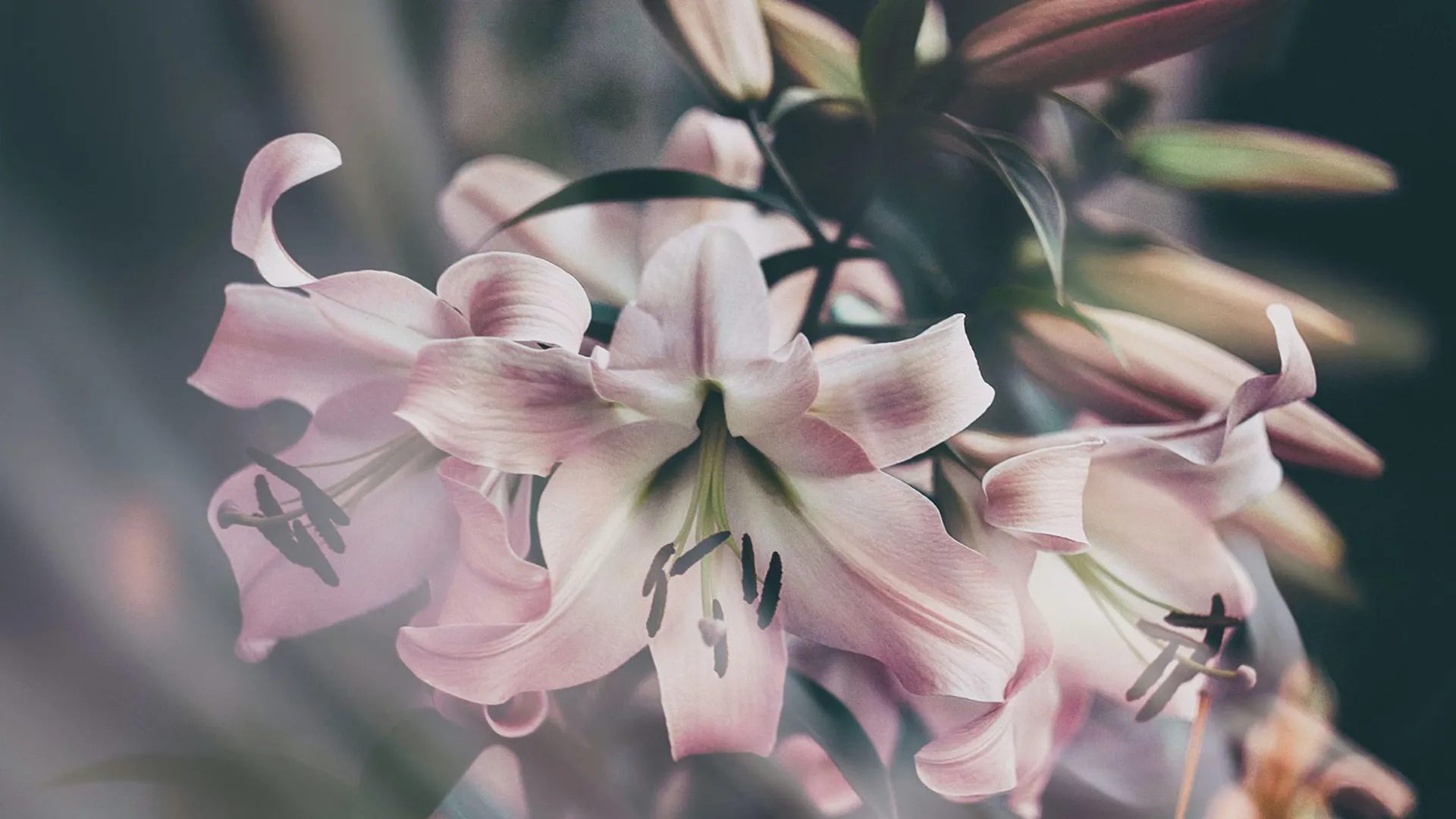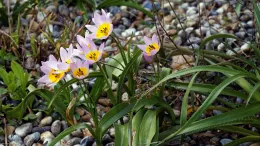How to Choose | Extra Easy | Trees & How to Choose | Shrubs, Perennials, Groundcovers & Grasses | Plants for Common Marin Settings | CA Native Plants | Deer Resistant Plants | Plants for Pollinators | Succulents & Low Water | Lawn Alternatives | Ferns & Shade Plants | Houseplants | Plants to Avoid | Plant Terms
Bulbs

If you love showy flowers, bulbs are for you. Bulbs, corms, and tubers store the food that keeps the plant alive during dormant periods. Leaves and stems wait patiently inside their little packages until dormancy is broken and their inner calendar knows that it’s showtime. Bulbs are terrific in garden beds and in pots, where they can be tucked away during the dormant months and brought out to shine when in bloom.
Use our list of > BULBS
With a bit of planning, you can enjoy successive waves of color in your garden thoughtout the year.
Plant these bulbs in FALL Allium (Allium) | Plant these bulbs in WINTER & SPRING Begonia, tuberous |
Tips for growing bulbs
• Buy top-size bulbs. Budget-priced bulbs generally yield smaller flowers. Order in summer from reliable bulb catalogs or online sources for the best variety. If buying from a nursery, select firm bulbs with no soft spots.
• Location: Choose a sunny or partially shaded spot depending on the species' light requirements.
• Soil: If the planting area doesn't have fast-draining soil, amend it with organic matter, such as compost or well-rotted manure. Bulbs sitting in sodden heavy clay soil will rot.
• Planting: Check the planting instructions for each type of bulb, but as a rule of thumb, plant at a depth three times the height of the bulb.
• Arrangement: Arrange the bulbs in informal clusters, rather than singly or in rows, for a showier display. For mass plantings, some gardeners recommend tossing the bulbs on the prepared soil and digging them in where they fall.
• Deer, rodents, and squirrels: Most bulbs are deer and rodent resistant, except for tulips, which gophers and deer savor. Species that squirrels tend to avoid include Fritillaria, Narcissus, glory of the snow (Chionodoxa), Hyacinth, Allium, lily-of-the-valley (Convallaria), and Siberian iris (Iris sibirica).
• Pollinators: Plants that are extra attractive to pollinators include Allium, Anemone, Chionodoxa, and Muscari.
• Chilling: Tulips and hyacinths should be prechilled for at least four to six weeks before planting. You can prechill them in a refrigerator but keep them away from apples and other fruits, which emit ethylene gas that can harm the bulbs. Plant the bulbs immediately after removing them from the refrigerator.
• Care: After the flowers have died in spring, allow the leaves to stay in place until they turn brown. Do not tie or braid the leaves; they need sunlight to produce food to replenish the bulb. Choose planting sites where the dying foliage will be camouflaged by other plants.

While most large-flowered tulips do not come back reliably after our mild winters, the smaller species tulips often provide a repeat performance. Try Tulipa bakeri, Tulipa clusiana or Tulipa saxatilis. Warning: gophers devour tulip bulbs.
Good naturalizers
Gardeners immediately think of daffodils when imagining drifts of eye-popping spring color, but there are many other bulb species that naturalize readily. In addition to multiplying year after year, these species have the added bonus of being deer and rodent resistant:
 Allium sphaerocephalon(drumstick allium). Egg-shaped clusters of crimson-purple flowers, 24 inches tall. July. Photo: Wikimedia Commons |
 Anemone blanda 'Blue Shades' (Grecian windflower). Hyacinth-blue flowers, 4 inches tall. April/May. Photo: Wikimedia Commons |
 Brodiaea (blue dick). Shades of blue, 18 to 24 inches tall. Native to West Coast. May/June. Photo: Mike L. Baird |
 Calochortus (Mariposa tulip). Choose from white, yellow, pink or lilac varieties, 12 to 24 inches tall. Native to California. May/June. Photo: Wikimedia Commons |
 Ipheion (spring starflower). Petite star-shaped flowers range from white to periwinkle blue, 3 to 6 inches tall. April/May. Photo: pixabay |
